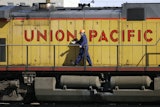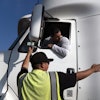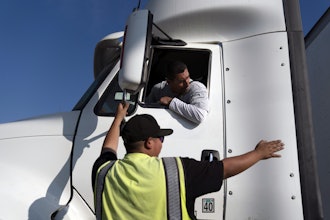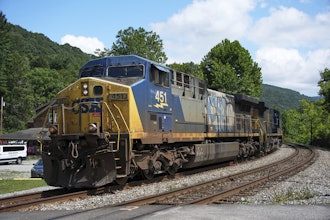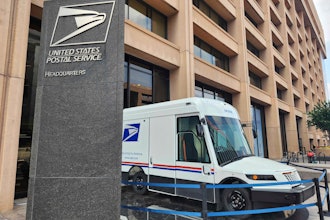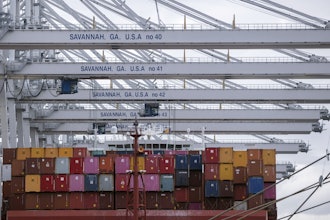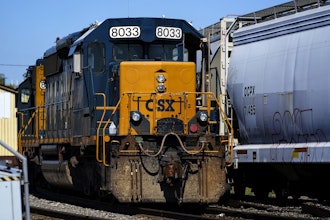Uber — the company that completely changed the market for car transportation — recently launched Uber Freight, a service that pairs available trucking companies with loads that need to be transported. Traditionally a very tedious process, Uber Freight is streamlining the supply chain through a simple workflow, quick job confirmation and fast payment, all within a mobile device.
According to data from PointSource — a design and tech agency that provides digital solutions — 88 percent of supply chain management personnel would be willing to use mobile to improve logistics management. And as Uber breaks into this area, it could potentially cause the same disruption as it did with taxi cabs.
ID recently interviewed PointSource chief technology officer and business technologist Barry Pellas to get his thoughts on how Uber Freight could impact the freight logistics market.
Industrial Distribution: For those unaware of this news or what it involves, can you explain what Uber Freight is and what it aims to do?
Barry Pellas: Uber Freight is a service that pairs available trucking companies with loads that need to be hauled from one place to another. Resembling the main Uber app, approved drivers can browse a list of available jobs and the routes they require, what they’ll be loading, and how much they’ll be paid. Once they complete that job, they can search for the next job. Uber Freight aims to eliminate the middleman, while also speeding up payment processes.
ID: What potential impacts – negative and positive – do you think this could have on the overall freight logistics market?
Pellas: One of the positive impacts of Uber Freight will be the ability to streamline the process of shipping products and not have to spend hours negotiating with brokers. Uber Freight also helps to solve the pain point of slow payment speed by pledging to pay their drivers within a few days and fee-free. Currently, independent drivers typically have to wait as many as 30 days to receive payment and are often unsure how much they are actually going to receive.
One significant challenge will be the supply chain industry’s ability to adapt to this type of technology. Although organizations understand the need for innovative tech, there’s still a gap between acceptance and implementation. In fact, according to data from PointSource’s recent Executing Digital Transformation study, 94 percent of supply chain respondents say their organization's leadership understands how digital can create efficiencies in daily operations. However, 89 percent agree they have disparate legacy systems that impact the speed of development.
Another negative impact could be the uncertainty of future jobs after delivery. With trucking being a time-consuming aspect of the supply chain, a great deal of planning and budgeting is required. It can be detrimental for a truck driver to drive 1500 miles to deliver a freight, get on the app to find another job nearby, and nothing pops up. The new breed of logistics providers, however, could take advantage of this through smart cognitive AI systems to provide round trip routes to overcome some of the downsides.
ID: If Uber Freight truly becomes disruptive, how do you see traditional freight logistics providers responding?
Pellas: Uber Freight has the potential to eliminate many of the trucking industry’s current pain points, forcing traditional freight logistics providers to adapt. In order to stay competitive, traditional providers will need to revamp their digital strategies if they want to keep up, especially from a customer experience perspective.
Uber Freight’s flexibility will put pressure on traditional providers to be more flexible and accelerate the trips and payments processes. In order to compete, traditional providers will need to upgrade from their disparate legacy systems to adopt more flexible and agile technology. Being on the road constantly, it is important that drivers stay connected and have access to updated information. Implementing technology that can support these needs is essential for both the driver and the provider.
ID: There’s a lot of talk about a looming truck drivers shortage. Could this service, or similar ones that may arise after, help solve that shortage?
Pellas: With many drivers reaching retirement age, a digital transformation like this has the potential to update the outdated trucking industry to make it more appealing to younger generations starting their careers. With a digital-first mentality becoming more prominent, the ability to use available technology to hop on the app and find work could create a big opportunity to attract people who would have not been interested in the trucking industry before. Also, with 72 percent of millennials having a desire to be their own boss, implementing technology that streamlines processes across industries, and gives drivers flexibility and freedom could be appealing to younger generations.
Companies looking to attract this new demographic will have to open up their data so that channels like Uber Freight can be fully utilized. In addition, these logistics partners will need to start thinking about employee journeys where they may not have done so before. Plotting and taking into account the involvement patterns for millennials will help by providing easy access to obtain the goals these demographics show.
Services like Uber Freight heed to some the problems a trucker typically faces: isolation, variable pay (based on miles on the road) and society’s image of truckers in general. Technologies are being introduced into the market and trying to address the needs of the individuals hauling our goods across the country, and if these technologies can become widely adopted disruptors, that is good for everyone.
ID: What other digital disruptors are impacting the supply chain right now?
Pellas: With supply chains becoming increasingly more complex due to globalization, IoT will cause a major digital disruption -- increasing efficiency, while keeping costs down. An example of this is Nike’s partnership with Flex to shorten the turnaround time of custom-made orders from weeks to days. Through this new technology, Nike can produce two different products with no equipment set up changes required in between. This leads to reduced friction in the supply chain, helping Nike to achieve its goal of “mass customization.”
Another disruptor is the use of artificial intelligence (AI). Through constant machine learning, supply chains are able to identify problems and make adjustments quickly to limit the amount of revenue lost. Being able to make changes in real-time is vital, and machine learning provides a lot of opportunity for companies to innovate quickly. Additional disruptors that will impact the supply chain include robotics and autonomous drivers. Though not quite ready for widespread adoption, both have the potential to improve efficiency and safety.
